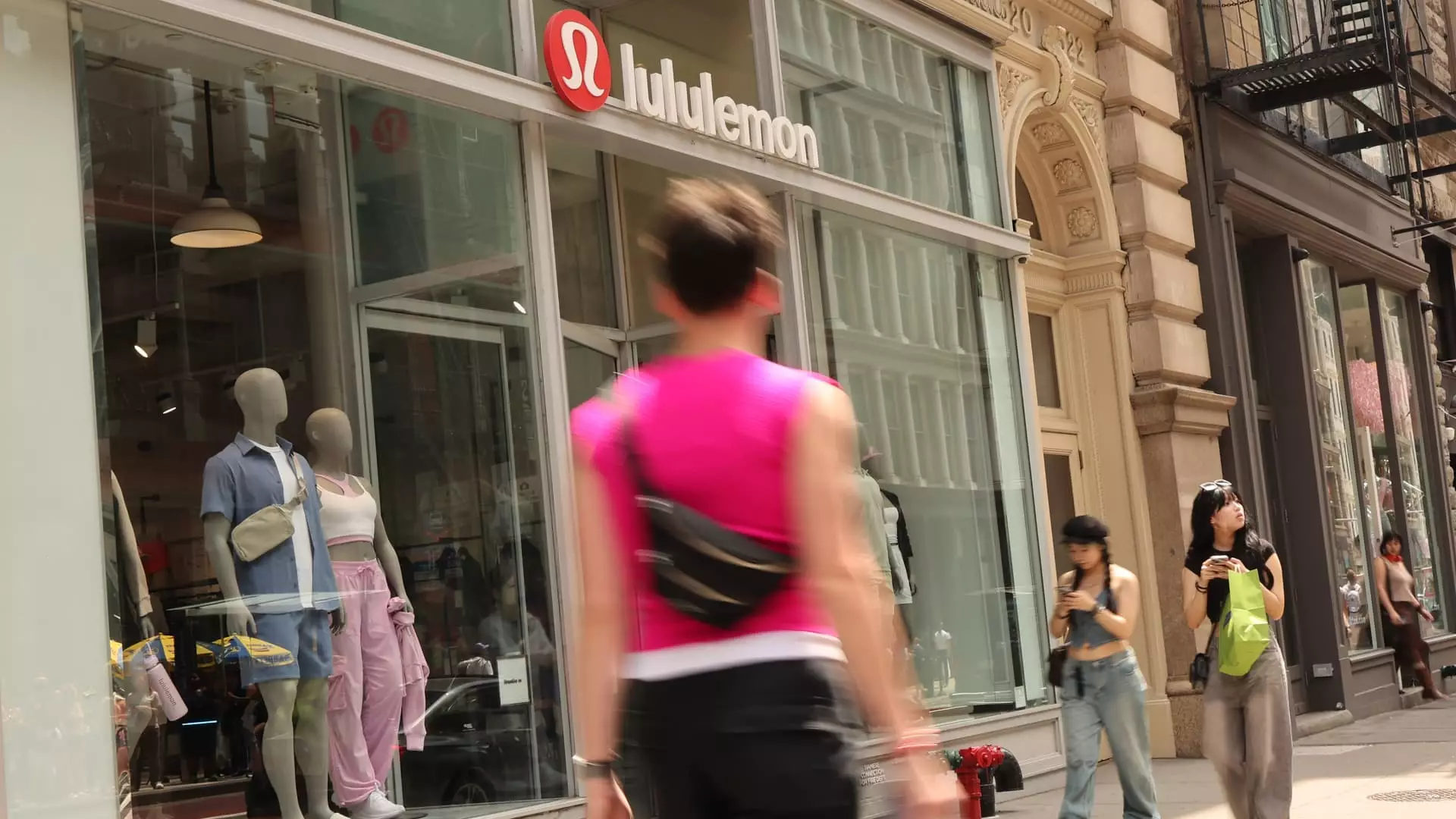Lululemon Athletica has long been a beacon of success in the athleisure industry, capturing the hearts of consumers and investors alike with its promise of quality and performance. However, recent financial disclosures have cast a shadow on the company’s stellar reputation. Although Lululemon exceeded Wall Street’s earnings per share expectations for its fiscal first quarter, the news is less rosy when the full-year earnings guidance is considered. The company reduced its earnings forecast, attributing the adjustment to an increasingly “dynamic macroenvironment.” This euphemism hints at the real concerns that have sent its shares tumbling by about 20% post-reporting.
The athletic apparel company is facing a plethora of challenges, including external factors such as tariffs and the looming threat of a recession in the U.S. market. CEO Calvin McDonald’s announcement that Lululemon would leverage its financial clout while investing in growth opportunities brings to mind both ambition and a measure of desperation. What does this say about a company that previously basked in the unwavering positivity of its trajectory? Investors must grapple with the unsettling reality that the once-unbreakable confidence in the company is now punctured.
A Closer Look at Performance Metrics
While Lululemon reported earnings of $2.60 per share, a slight increase from the previous year, the tepid growth of revenues—$2.37 billion, up from $2.21 billion—comes with caveats that Wall Street analysts were keenly aware of. With Lululemon adjusting its full-year earnings per share forecast down to a range of $14.58 to $14.78 from an earlier prediction of $14.95 to $15.15, it is clear that the company is grappling with the realities of macroeconomic pressures that its previous optimism couldn’t foresee. Analysts had anticipated earnings per share of $14.89, highlighting the disconnect between expectation and performance.
The reduction in guidance, while arguably deliberate, raises a few questions regarding the company’s strategic foresight. Could McDonald and his team have taken more proactive measures in the face of known tariff challenges? As competitors like Nike and Gap glean insights into the impact of tariffs and are preparing to hike prices, Lululemon appears to have been caught off guard by the implications of policies they could not control.
Competitive Landscape and Market Sentiment
The current market is rife with uncertainty, as demonstrated by numerous retailers—Abercrombie & Fitch, Macy’s, and even American Eagle Outfitters—cutting their profit outlooks. Among Lululemon’s competitors, Gap has already announced a significant estimated loss due to tariff adjustments. The question arises: Is Lululemon uniquely positioned to withstand these blows, or is it merely delaying the inevitable pressure that others are facing?
Investor sentiment is becoming increasingly cautious, and the 13% drop in LULU stock year-to-date speaks volumes. Wall Street’s expectations for comparable sales at a growth rate of 3% have noticeably fallen short at just a 1% increase. This discrepancy denotes a troubling trend, suggesting that Lululemon may be losing the edge that once set it apart in a competitive marketplace.
What stands out even more is that while the company’s international sales rose by 6%, domestic sales decreased by 2%. This raises further concerns about the brand’s acceptance in its home market, making one wonder if the “Canadian oasis” is losing its luster in America. Undoubtedly, the once-untouchable growth narrative is becoming a cautionary tale of economic volatility, consumer sentiment, and the perils of overreliance on a single geographic market.
Future Strategy Amidst Uncertainty
With a corporate portfolio that heavily relies on international manufacturing—40% in Vietnam alone—Lululemon is intricately tied to global supply chains that are now more fragile than ever. The observation that the company does not own manufacturing facilities and relies on third-party suppliers raises eyebrows. As tariffs threaten to reshape the cost structures, can Lululemon pivot effectively to maintain its market position?
Moreover, while McDonald’s optimism about leveraging financial strength is commendable, it may not be enough to stave off the tide of economic pressures. Moving forward, the leadership must reconcile ambition with adaptability to navigate a future where customer preferences and economic circumstances can shift rapidly. The query that looms large is whether Lululemon will succeed in this balancing act, or whether its trajectory might be forever altered by the current upheaval? The answer to that question will dictate how we view the beloved athleisure brand in an ever-evolving market landscape.


Leave a Reply